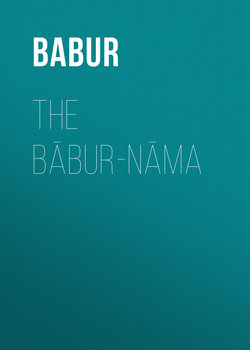Читать книгу The Bābur-nāma - Babur - Страница 10
PREFACE
Chapter III.
THE TURKI MSS. AND WORK CONNECTING WITH THEM
Part II. Work on the Hindustan MSS
III
ОглавлениеDuring the first decade of Humayun’s reign (1530-40) at least two important codices seem to have been copied.
The earlier (see Table, No. 2) has varied circumstantial warrant. It meets the need of an archetype, one marginally annotated by Humayun, for the Elphinstone Codex in which a few notes are marginal and signed, others are pell-mell, interpolated in the text but attested by a scrutineer as having been marginal in its archetype and mistakenly copied into its text. This second set has been ineffectually sponged over. Thus double collation is indicated (i) with Babur’s autograph MS. to clear out extra Babur matter, and (ii) with its archetype, to justify the statement that in this the interpolations were marginal. – No colophon survives with the much dwindled Elph. Codex, but one, suiting the situation, has been observed, where it is a complete misfit, appended to the Alwar Codex of the second Persian translation, (estimated as copied in 1589). Into the incongruities of that colophon it is not necessary to examine here, they are too obvious to aim at deceit; it appears fitly to be an imperfect translation from a Turki original, this especially through its odd fashion of entitling “Humayun Padshah.” It can be explained as translating the colophon of the Codex (No. 2) which, as his possession, Humayun allowably annotated and which makes it known that he had ordered ‘Ali’u-’l-katib to copy his father’s Turki book, and that it was finished in February, 1531, some six weeks after Babur’s death.12
The later copy made in Humayun’s first decade is Haidar Mirza’s (infra).
12
For precise limits of the original annotation see p. 446 n. – For details about the E. Codex see JRAS. 1907, art. The Elph. Codex, and for the colophon AQR. 1900, July, Oct. and JRAS. 1905, pp. 752, 761.
